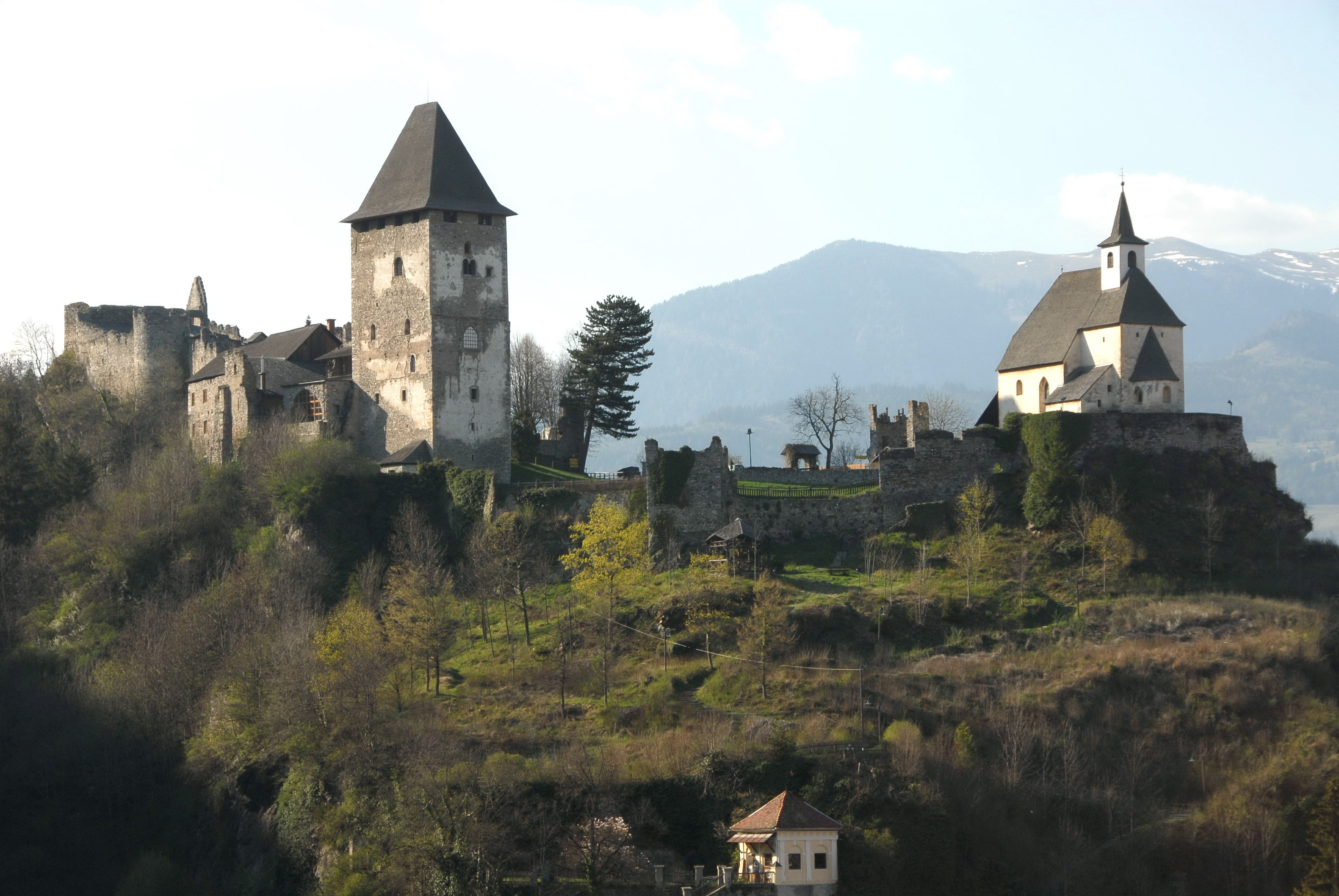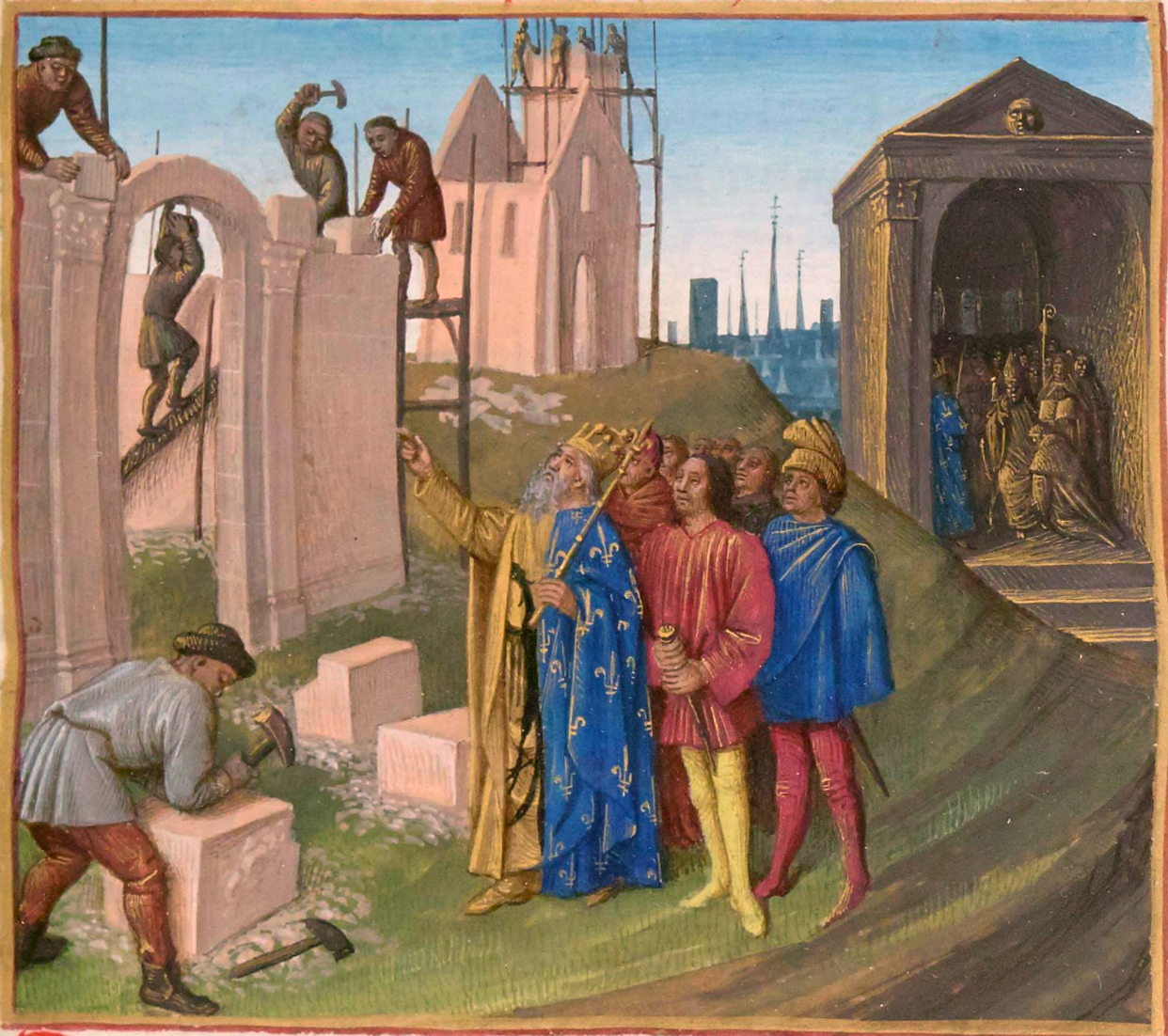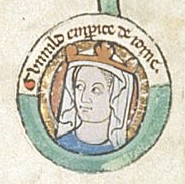|
Adalbero, Duke Of Carinthia
Adalbero of Eppenstein ( – 28 November 1039) was Duke of Carinthia and Margrave of Verona from 1011 or 1012 until 1035. Biography Adalbero was the son of the Bavarian count Markward of Eppenstein, who around 970 had married Hadmud, a daughter of Count Adalbero of Ebersberg and ruled as Margrave of Styria. About 1000 Adalbero succeeded his father as Styrian margrave. He was married to Beatrix, probably a daughter of Duke Herman II of Swabia from the Conradine dynasty and sister-in-law of the later Salian emperor Conrad II. Upon the death of the Salian duke Conrad I in 1011, the German king Henry II enfeoffed Adalbero with Carinthia. Adalbero's Carinthian dominions then included the March of Carniola, the Windic March and the rule over the vast March of Verona stretching from the Trentino up to the Isonzo River. Late Duke Conrad's son and heir, Conrad the Younger was a minor when his father died and therefore was not taken into account, becoming a bitter rival. The t ... [...More Info...] [...Related Items...] OR: [Wikipedia] [Google] [Baidu] |
Duchy Of Carinthia
The Duchy of Carinthia (; ; ) was a duchy located in southern Austria and parts of northern Slovenia. It was separated from the Duchy of Bavaria in 976, and was the first newly created Imperial State after the original German stem duchies. Carinthia remained a State of the Holy Roman Empire until its dissolution in 1806, though from 1335 it was ruled within the Austrian dominions of the Habsburg dynasty. A constituent part of the Habsburg monarchy and of the Austrian Empire, it remained a Cisleithanian crown land of Austria-Hungary until 1918. By the 1920 Carinthian plebiscite in October 1920, the main area of the duchy formed the Austrian state of Carinthia. History In the seventh century the area was part of the Slavic principality of Carantania, which fell under the suzerainty of Duke Odilo of Bavaria in about 743. The Bavarian stem duchy was incorporated into the Carolingian Empire when Charlemagne deposed Odilo's son Duke Tassilo III in 788. In the 843 partition b ... [...More Info...] [...Related Items...] OR: [Wikipedia] [Google] [Baidu] |
Hemma Of Gurk
Hemma of Gurk (; 27 June 1045),29 June according t also called Emma of Gurk (), was a noblewoman and founder of several churches and monasteries in the Duchy of Carinthia. Buried at Gurk Cathedral since 1174, she was beatified on 21 November 1287 and canonised on 5 January 1938 by Pope Pius XI. Her feast day is 27 June. Hemma is venerated as a saint by both the Catholic Church and the Eastern Orthodox Church, and as patroness of the current Austrian state of Carinthia. Biography Little is known about Hemma's descent; she was probably born between 995 and 1000 (other sources mention 980 AD), her ancestors were related to the Bavarian Luitpoldings and thus to Emperor Henry II, Holy Roman Emperor, Henry II. Her grandmother Imma (''Emma'') was vested with market rights, market and Mint (facility), minting rights at her estates in Lieding (today part of Straßburg, Austria, Straßburg) by Emperor Otto II, Holy Roman Emperor, Otto II in 975. The bestowal raised objections by the Archb ... [...More Info...] [...Related Items...] OR: [Wikipedia] [Google] [Baidu] |
Friesach
Friesach () is a historic town in the Sankt Veit an der Glan (district), Sankt Veit an der Glan district of Carinthia (state), Carinthia, Austria. First mentioned in an 860 deed, it is known as the oldest town in Carinthia. Geography Location Friesach covers an area of 120.83 km2 and its mean elevation is 631 meters above sea level. It is located in northern Carinthia near the border with Styria, about north of its capital Klagenfurt. Populated places The municipality of Friesach consists of the following cadastral community, cadastral communities (or ''katastralgemeinden''): Friesach, St. Salvator and Zeltschach; while further subdivided into 43 populated places (with population in brackets as of 1 January 2022). * Dobritsch (13) * Dörfl (13) * Engelsdorf (377) * Friesach (Breže) (1933) * Gaisberg (77) * Grafendorf (246) * Guldendorf (4) * Gundersdorf (5) * Gunzenberg (8) * Gwerz (51) * Harold (18) * Hartmannsdorf (11) * Hundsdorf (5) * Ingolsthal (90) * Judendor ... [...More Info...] [...Related Items...] OR: [Wikipedia] [Google] [Baidu] |
Princes Of The Holy Roman Empire
Prince of the Holy Roman Empire (, , cf. ''Fürst'') was a title attributed to a hereditary ruler, nobleman or prelate recognised by the Holy Roman Emperor. Definition Originally, possessors of the princely title bore it as immediate vassals of the Emperor who held a fief (secular or ecclesiastical) that had no suzerain except the Emperor. However, by the time the Holy Roman Empire was abolished in 1806, there were a number of holders of Imperial princely titles who did not meet these criteria. Thus, there were two main types of princes: those who exercised '' Landeshoheit'' (sovereignty within one's territory while respecting the laws and traditions of the empire) as well as an individual or shared vote in the College of Princes, and those whose title was honorary (the possessor lacking an immediate Imperial fief and/or a vote in the Imperial Diet). The first came to be reckoned as "royalty" in the sense of being treated as sovereigns, entitled to inter-marry with reign ... [...More Info...] [...Related Items...] OR: [Wikipedia] [Google] [Baidu] |
Egilbert (bishop Of Freising)
Egilbert was bishop of Freising in Germany from 1005 to 1035. He was the tutor of Henry, Duke of Bavariathe future Henry III, Holy Roman Emperor Henry III (, 28 October 1016 – 5 October 1056), called the Black () or the Pious, was Holy Roman Emperor from 1046 until his death in 1056. A member of the Salian dynasty, he was the eldest son of Conrad II and Gisela of Swabia. Henry was rais ...between 1029 and 1033. References Sources * * 764 deaths 11th-century bishops in Bavaria Roman Catholic bishops of Freising {{Germany-RC-bishop-stub ... [...More Info...] [...Related Items...] OR: [Wikipedia] [Google] [Baidu] |
Roman Catholic Archdiocese Of Munich And Freising
The Archdiocese of Munich and Freising (, ) is a Latin Church ecclesiastical territory or diocese of the Catholic Church in Bavaria, Germany."Archdiocese of München und Freising " ''Catholic-Hierarchy.org''. David M. Cheney. Retrieved February 29, 2016"Metropolitan Archdiocese of München und Freising" ''GCatholic.org''. Gabriel Chow. Retrieved February 29, 2016 It is governed by the Archbishop of Munich and Freising, who administers the see from the co-cathedral in Munich, the Munich Frauenkirche, Frauenkirche. The other, much older co-cathedral is Freising Cathedral. The see was canonically erect ... [...More Info...] [...Related Items...] OR: [Wikipedia] [Google] [Baidu] |
Aachen
Aachen is the List of cities in North Rhine-Westphalia by population, 13th-largest city in North Rhine-Westphalia and the List of cities in Germany by population, 27th-largest city of Germany, with around 261,000 inhabitants. Aachen is located at the northern foothills of the High Fens and the Eifel Mountains. It sits on the Wurm (Rur), Wurm River, a tributary of the Rur (river), Rur, and together with Mönchengladbach, it is the only larger German city in the drainage basin of the Meuse. It is the westernmost larger city in Germany, lying approximately west of Cologne and Bonn, directly bordering Belgium in the southwest, and the Netherlands in the northwest. The city lies in the Meuse–Rhine Euroregion and is the seat of the Aachen (district), district of Aachen ''(Städteregion Aachen)''. The once Celts, Celtic settlement was equipped with several in the course of colonization by Roman people, Roman pioneers settling at the warm Aachen thermal springs around the 1st cen ... [...More Info...] [...Related Items...] OR: [Wikipedia] [Google] [Baidu] |
King Of The Romans
King of the Romans (; ) was the title used by the king of East Francia following his election by the princes from the reign of Henry II (1002–1024) onward. The title originally referred to any German king between his election and coronation as Holy Roman Emperor by the pope. The title was also used to designate the successor to the throne elected during the lifetime of a sitting Emperor. From the 16th century onwards, as German kings adopted the title of Emperor-elect and ceased to be crowned by the pope, the title continued to be used solely for an elected successor to the throne during his predecessor's lifetime. The actual title varied over time. During the Ottonian period, it was King of the Franks (German: ''König der Franken'', Latin: ''Rex Francorum''), from the late Salian period it was King of the Romans (German: ''König der Römer'', Lat.: ''Rex Romanorum''). In the Modern Period, the title King in Germania (German: ''König in Germanien'', Lat.: ''Germaniae R ... [...More Info...] [...Related Items...] OR: [Wikipedia] [Google] [Baidu] |
Henry III, Holy Roman Emperor
Henry III (, 28 October 1016 – 5 October 1056), called the Black () or the Pious, was Holy Roman Emperor from 1046 until his death in 1056. A member of the Salian dynasty, he was the eldest son of Conrad II and Gisela of Swabia. Henry was raised by his father, who made him Duke of Duchy of Bavaria, Bavaria in 1026, appointed him co-ruler in 1028 and bestowed him with the duchy of Swabia and the Kingdom of Burgundy ten years later in 1038. The emperor's death the following year ended a remarkably smooth and harmonious transition process towards Henry's sovereign rule, that was rather uncharacteristic for the Ottonian dynasty, Ottonian and Salian dynasty, Salian monarchs. Henry succeeded Conrad II as Duke of Carinthia and King of Italy and continued to pursue his father's political course on the basis of ''virtus et probitas'' (courage and honesty), which led to an unprecedented sacral exaltation of the kingship. In 1046 Henry ended the History of the papacy (1048–1257), papal s ... [...More Info...] [...Related Items...] OR: [Wikipedia] [Google] [Baidu] |
Frankfurt
Frankfurt am Main () is the most populous city in the States of Germany, German state of Hesse. Its 773,068 inhabitants as of 2022 make it the List of cities in Germany by population, fifth-most populous city in Germany. Located in the foreland of the Taunus on its namesake Main (river), Main, it forms a continuous conurbation with Offenbach am Main; Frankfurt Rhein-Main Regional Authority, its urban area has a population of over 2.7 million. The city is the heart of the larger Rhine-Main metropolitan region, which has a population of more than 5.8 million and is Germany's Metropolitan regions in Germany, second-largest metropolitan region after the Rhine-Ruhr metropolitan region, Rhine-Ruhr region and the List of EU metropolitan regions by GDP#2021 ranking of top four German metropolitan regions, fourth largest metropolitan region by GDP in the European Union (EU). Frankfurt is one of the ''de facto'' four main capitals of the European Union (alongside Brussels, Luxembourg Cit ... [...More Info...] [...Related Items...] OR: [Wikipedia] [Google] [Baidu] |
Synod
A synod () is a council of a Christian denomination, usually convened to decide an issue of doctrine, administration or application. The word '' synod'' comes from the Ancient Greek () ; the term is analogous with the Latin word . Originally, synods were meetings of bishops, and the word is still used in that sense in Catholicism, Oriental Orthodoxy and Eastern Orthodoxy. In modern usage, the word often refers to the governing body of a particular church, whether its members are meeting or not. It is also sometimes used to refer to a church that is governed by a synod. Sometimes the phrase "general synod" or "general council" refers to an ecumenical council. The word ''synod'' also refers to the standing council of high-ranking bishops governing some of the autocephalous Eastern Orthodox and Oriental Orthodox churches. Similarly, the day-to-day governance of patriarchal and major archiepiscopal Eastern Catholic Churches is entrusted to a permanent synod. Usages in diffe ... [...More Info...] [...Related Items...] OR: [Wikipedia] [Google] [Baidu] |







